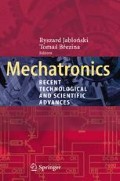Abstract
This paper presents a new concept for the gustatory sense examination. The gustatory sense examination methods used so far made use of gustometry and electrogustometry. All the former examination methods for the gustatory sense threshold were subjective by nature. After delivering a stimulus the examined person had to decide whether he or she senses the taste and to signal this to the examiner. In order to eliminate the subjective influence of the patient on the outcome of the measurement, we have used the gustatory evoked potentials. To trigger and register the gustatory evoked potentials, we have designed and developed a special system described in this paper.
Access this chapter
Tax calculation will be finalised at checkout
Purchases are for personal use only
Preview
Unable to display preview. Download preview PDF.
References
Kamiński, T., Grzanka, A.: A Concept of Objective Electrogustometry. Biomedical Engineering, IASTED, Innsbruck (2010)
Knychalska-Karwan, Z.: Jezyk: fizjologia i patologia, WUJ, Kraków (2000)
Ryglewicz, D.: Zaburzenia smaku w chorobach neurologicznych. Terapia 1(146), 30–33 (2004)
Balczewska, E., Nowak, A.: Zaburzenia smakowe – dysgeusia. Nowa Stomatologia 1-2, 12–16 (2000)
Sienkiewicz-Jarosz responsem. i in., Taste responses in patients with Parkinson’s disease. Journal Neurology Neurosurgery Psychiatry 76, 40–46 (2005)
Konopka, W., Dobosz, P., Kochanowicz, J.: Zaburzenia smaku w otolaryngologii. Otolaryngologia 2(4), 145–149 (2003)
Dobosz, P., Konopka, W., Grzanka, A.: Dwubiegunowa elektrogustometria pradowo-impulsowa. Prace Naukowe Politechniki Warszawskiej Elektronika, z.157 (2006)
Krarup, B.: Electrogustometry: a method for clinical taste examinations. Acta Otolaryng 49, 294 (1958)
Prutchi, D., Norris, M.: Design and development of medical and electronic instrumentation. John Wiley & Sons, Chichester (2005)
Augustyniak, P.: Przetwarzanie sygnałów elektrodiagnostycznych, AGH Uczelnianie Wydawnictwa Naukowo – Dydaktyczne, Kraków (2001)
Author information
Authors and Affiliations
Editor information
Editors and Affiliations
Rights and permissions
Copyright information
© 2011 Springer-Verlag Berlin Heidelberg
About this paper
Cite this paper
Grzanka, A., Kamiński, T., Frączek, J. (2011). The Latest Developments in the Construction of an Electrogustometer. In: Jabloński, R., Březina, T. (eds) Mechatronics. Springer, Berlin, Heidelberg. https://doi.org/10.1007/978-3-642-23244-2_75
Download citation
DOI: https://doi.org/10.1007/978-3-642-23244-2_75
Publisher Name: Springer, Berlin, Heidelberg
Print ISBN: 978-3-642-23243-5
Online ISBN: 978-3-642-23244-2
eBook Packages: EngineeringEngineering (R0)

